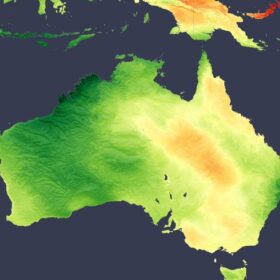Voltalia, Taqa Arabia to develop Egyptian 3 GW wind-solar facility
French developer Voltalia and Egyptian energy distribution company Taqa Arabia have signed a memorandum of understanding to turn an existing 545 MW wind farm into a 3 GW hybrid wind-solar site.
‘Returning to work from maternity leave after becoming a mom can be challenging’
This week, Women in Solar Europe (WiSEu) gives voice to renewable energy expert Ercilia Estrada Garzona. She says it’s crucial to recognize the pervasive negative assumptions about mothers regarding their ambition and commitment to their careers. “To combat these biases, organizations must take decisive action. This can be achieved by normalizing parental leave for all parents, ensuring transparency in career advancement and promotion prospects post-leave, and developing robust support systems to help employees transition back to work smoothly,” she states.
Cloudier summer predicted for Australia’s East Coast solar
In a new weekly update for pv magazine, Solcast, a DNV company, reports that the upcoming Australian summer is likely to see cloudier than usual conditions, potentially reducing solar generation across key regions, especially along the East Coast.
Understanding renewable energy ‘drought’ at solar, wind sites
An international research team based across Canada, China and the US have said developers must stop focusing not only resource availability, and also consider resource variability and resource extremeness, to avoid renewables “drought” at solar and wind sites.
Learning from leading rooftop solar markets
A report from the Council of Energy, Environment and Water has analyzed nine of the ten countries with the largest rooftop solar markets to offer recommendations to other economies looking to accelerate rooftop solar deployment.
Premier Energies to enter aluminum frame manufacturing
Premier Energies, a solar cell and module manufacturer in India, will set up an aluminum frame factory with an annual capacity of 36,000 metric tons for captive consumption.
Polysilicon prices decline amid rising inventories, weak demand
In a new weekly update for pv magazine, OPIS, a Dow Jones company, provides a quick look at the main price trends in the global PV industry.
Dutch parliament approves end of net metering in 2027
Trade body Holland Solar says the Dutch parliament has approved eliminating net metering in 2027, giving the solar sector clarity to move forward.
Australia moves 1.4 GW of new solar, wind projects forward in Q3
Investment in large-scale renewable energy generation continues to trend upwards in Australia with more than 1.4 GW of new solar and wind projects, worth $3.3 billion, reaching financial commitment in the third quarter of 2024.
Stuck in a loop: The co-adoption dynamics of PV and heat pumps
Scientists in Switzerland have created a system-dynamics model for the adoption of PV and heat pumps in Swiss residential buildings up to 2050. They have examined several scenarios to see how the incentive for PV affects heat pump adoption and the other way around, and they have concluded that strong regulatory changes are necessary to completely decarbonize the residential sector.










